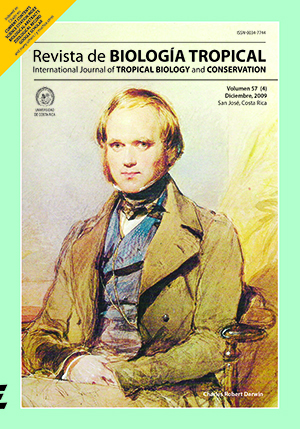Abstract
Andean ecosystems harbor a high floristic diversity, which is being threatened by human disturbances such us deforestation and by the expansion of the agricultural frontier. One of these eco-systems are the Andean oak forests dominated by Quercus humboldtii, a threatened species in Colombia. We assessed the floristic composition and structure of three Andean oak forests located in three localities (San Andrés de Cuerquia, Belmira and Guarne) of Antioquia. The main goal was to determine whether these forests showed similarities in their structure and floristic composition. In each site, a permanent plot of 5000 m2 (0.5 ha) was established. All trees with D ≥ 10 cm were sampled and identified to species. The Importance Value Index (IVI) was calculated as the sum of relative density (DeR), dominance (DoR) and frequency (FR) of a species. Trees with 5 ≤ D < 10 cm and 2 ≤ D < 5 cm were registered in sub-plots of 0.05 and 0.0144 ha, respectively. Finally, we used Jaccard’s Index to quantify the floristic similarity among oak forest. When we considered all trees with D ≥ 10 cm in the three forests, the number of species ranged from 18 to 54, whilst the number of individuals ranged from 326 to 680. The Guarne oak forest showed the highest species richness. In all sites, Q. humboldtii (Fagaceae) was the most important species in relation to the IVI, while Clusia sp. (Clusiaceae) andMyrsine coriaceae (Myrsinaceae) were the most important species in San Andrés de Cuerquia, Clethra fagifolia(Clethraceae) was important only in Belmira and Myrcia popayanensis (Myrtaceae) was important in Guarne. The families with the highest number of species were Fabaceae, Melastomataceae and Rubiaceae. Floristic simi-larity among places was low. The size distribution of trees had an inverse J-shape curve for all sites with changes in the abundance for size class. The three oak forests differed in their structure and floristic composition prob-ably because of different disturbance degrees.
##plugins.facebook.comentarios##

This work is licensed under a Creative Commons Attribution 4.0 International License.
Copyright (c) 2009 Revista de Biología Tropical






